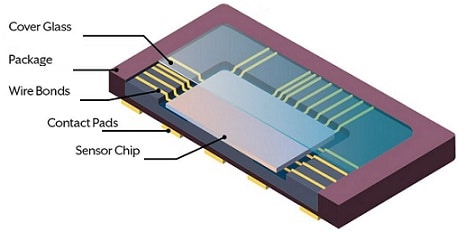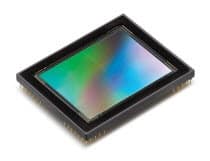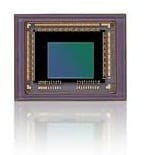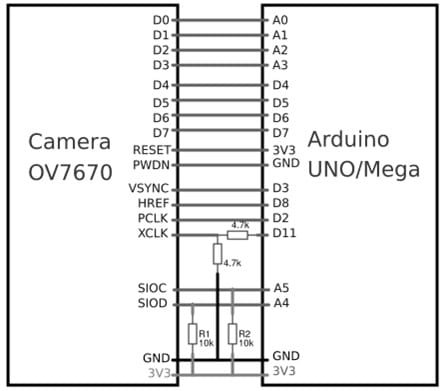Image sensor plays a key role in digital cameras to provide high-resolution images. So developments in this sensor technology assist undo blurring within images and permit us to capture accurate photos in exposure and depth. Image sensing has a long history from the first daguerreotype film cameras to the analog film rolls to expose them within the 20th century. Image sensors are becoming more computational and influencing advances within machine learning, image & signal processing to become part of smart camera systems. These sensors’ size has also decreased to our fingertips so that they capture details on microscopic and macroscopic levels. This article discusses an overview of an image sensor, its working, and its applications.
What is an Image Sensor?
An image sensor is a sensor that changes an optical image into a signal. Imaging devices and digital cameras use this sensor to convert the light captured by the digital camera into a digital image. This sensor plays a primary role in imaging devices and embedded digital cameras. The image sensor’s main function is to capture the light from our surroundings and change the captured light into electrical signals. Image sensors are utilized in analog and digital imaging devices like camera modules, optical mouse devices, digital cameras, camera phones, night vision equipment, and medical imaging equipment.
How does an Image Sensor Work?
An image sensor is an electronic device that is mainly used in embedded digital cameras, imaging devices, and standalone cameras. When light hits the camera lens, the image sensor captures it and changes it into an electronic signal. Then, the imaging device processor or camera receives the electronic signal and changes it into a digital image.
Every image sensor has an array of pixels that collect single light particles or photons. After that, the pixels change photons to electrons, which then move into signal conditioning and processing circuitry. After that, the electron charge outputs a voltage signal, which is amplified before the camera circuitry receives it. So that digitization allows every user to electronically store and simply retrieve digital image files.
Image Sensor Components
The typical image sensor diagram is shown below. This sensor includes different components like; cover glass, package, wire bonds, contact pads, and sensor chips which are discussed below.

Image Sensor Components
This sensor holds the sensor chip within a package through protective glass. So, the package in this sensor contains contact pads that connect the image sensor to the printed circuit board. This chip of the sensor includes pixels that feature light-sensitive elements, micro-electrical components, and microlenses. Semiconductor companies make these chips and cut them from wafers.So wire bonds in this sensor transmit the signal using the die toward the contact pads at the sensor’s back side.
This sensor packaging guards the chip as well as the wire which bonds from environmental and physical harm and gives thermal dissipation. This sensor has interconnecting electronics mainly for signal transfer. This sensor’s transparent window at the front side of the packaging known as cover glass protects the sensor chip & wires in this sensor allowing light to achieve the light-sensitive region.
Image Sensor Function in a Camera System
The image sensor in a camera system gets photons or incident light that is focused throughout a lens (or) other optics. Based on the type of sensor, it transmits data to the next stage either as a digital or voltage signal. CMOS sensor changes photons into electrons, after that to a voltage, and next into a digital value with an on-chip ADC (analog to digital converter).
Based on the manufacturer of the camera system, the general layout as well as components used will be different. This general layout’s main purpose is to change light into a digital signal, after that it will be examined to activate some future action. Consumer digital cameras would have extra components for memory cards, control knobs, and switches whereas machine vision cameras do not have any additional components.
Types of Image Sensor
Image sensors are two types of CCD (charged-coupled device) and CMOS (complementary metal oxide semiconductor) sensors which are discussed below.
CCD Sensor
Willard Boyle & George E. Smith invented the CCD sensor in 1969, associated with AT & T Bell Labs. They manufactured these image sensors with a superior method that allows the moving of charge across the chip exclusive of any distortion, thus generating high-quality sensors with light sensitivity and reliability. By 1971, they were using these sensors to capture images.
The images produced by this sensor possess low noise and high quality. The processing speed will range from modest to very fast and the sensor complexity is low. This type of image sensor consumes more power as compared to a CMOS sensor. CCD sensor is used widely in various applications which need superior-quality image data.

CCD Sensor
CMOS Sensor
CMOS sensor technology mainly captures images. Manufacturers can easily integrate this sensor onto a single chip using conventional procedures. This ICs output will be in the digital bits form but they are very complex. These image sensors are very cheap and simple to manufacture as compared to CCD. In this sensor, each pixel can rate separately; image processing is very fast, has low sensitivity, and is fairly more exposed to noise. The development in CMOS image technology is allowing these sensors to move to high ranges of performance.

CMOS Sensor
Image Sensor Specifications:
CMOS image sensor specifications include the following.
- Its effective resolution is 800 (H) x 600 (W).
- Its readable resolution is 832 (H) x 670 (V).
- This sensor’s quantum efficiency is 90.7% at 550nm.
- This sensor’s pixel size is 16µm.
- Its shutter type is a rolling shutter.
- The sensor type is back-side illuminated.
- FWC is 73ke.
- Its maximum frame rate is 60fps in HDR mode and 25fps in low noise mode.
- Output format is four sub-LVDS data o/p pairs and one pair of Sub-LVDS CLK o/p.
- Its dynamic range is 93 dB.
- Maximum power consumption is 245mW.
- Its package is 84-pin CLCC.
- The maximum output data rate is 445.5Mbps for each lane at HDR mode.
- Its input CLK rate is upto 50MHz.
- Photosensitive area is 12.8mm x 9.6mm.
- Its voltage supply for analog is 3.3V and 1.75V for digital.
Image Sensor Characteristics
Below, we discuss the main characteristics of image sensors, including sensor format, SNR, pixel size, resolution, dynamic range, and responsivity.
Sensor Format
Sensor format is an optical format that corresponds to the image sensor size in a digital camera. This value represents the diagonal measurement of the active image size in a sensor. Here the inch refers mainly to the optical form factor. This throwback refers to the days of tube cameras when a tube image format placed within a single deflection coil was known as one format.
Pixel Size
Pixels are the tiny elements on the image sensor that change the light energy to electrons, then digitize the image sensor to provide us with a digital image. Every pixel size reflects how many photons it accepts throughout the time the image sensor is exposed to light. If the pixel size is large, it allows light and provides us with a good image. At present, improving technology provides very good quality small pixel size images. So these improvements decrease the sensor size.
Resolution
The resolution indicates the number of pixels within the image, which you can measure by multiplying the height and width of the image. The pixel count of the sensor gives an idea of the expected image quality. However, the application determines the image’s quality. For instance, if you use a digital camera to capture wide-angle images, a high-resolution camera is necessary to ensure that additional pixels cover the entire area.
Signal-to-Noise Ratio
Falling light on the image sensor causes the signal to noise ratio, which is the ratio of the healthy signal to the unnecessary noise. This is one of the most important image quality measurements. Image sensors including high SNR generate very clear and sharper object images. The low signal-to-noise ratio within the image has some artifacts because of different noise levels within the captured image.
Responsivity
Responsivity is an electrical output measure for each optical input. This value simply indicates the ability of the sensor to generate good images in low-light conditions. If the responsivity is higher, it indicates that fewer photons are enough to make good electrical output. The optical input will be changed with wavelength. Therefore, the responsivity curve will show the electrical output mainly for different input light wavelengths.
Dynamic Range
The dynamic range is a measure of how efficiently it reproduces features within both dark and bright areas. The maximum dynamic range that a sensor can capture is known as the broadest light range. Evaluating dynamic range uses stops where each stop indicates a doubling of the gathered intensity. The most advanced DSLR & mirrorless cameras capture images only with about 14 stops of dynamic range as compared to the 20 stops of the human eye.
OV7670 Camera Module Interfacing with Arduino
OV7670 camera module interfacing with Arduino is shown below. This camera module is a CMOS image sensor that gives complete frame windowed 8-bit images within a wide image format range. This image sensor can be interfaced easily with Arduino UNO. OV7670 is a FIFO camera module that is available from various electronic manufacturers with various pin configurations. In the OV7670 module, the image array can operate up to 30 frames for each second in VGA
The required components for this interfacing mainly include; Arduino UNO, an OV7670 camera module, 10k & 4.7k resistors, Arduino IDE, and a serial port reader.
The connections of this interfacing follow as;

OV7670 Camera Module Interfacing with Arduino
- The Arduino Uno connects OV7670 module D0 to D3 pins to A0 to A3 pins.
- The Arduino Uno connects OV7670 module D4 to D7 pins to D4 to D7 pins.
- The Arduino Uno connects the OV7670 module RESET pin to the 3V3 pin.
- The Arduino Uno connects the OV7670 module PWDN pin to the GND pin.
- OV7670 modules VSYNC pin to D3, HREF to D8, PCLK to D2, XCLK to D11 pins of Arduino Uno.
- OV7670 modules SIOC to A5, SIOD to A4, GND to GND, and 3V3 to 3V3 pin of Arduino Uno.
Code
You can download the required code from GitHub. Extract the file after downloading the code and upload it onto the Arduino board. After uploading the code, the OV7670 camera captures real-time images and displays them on the OV7670 window.
Advantages & Disadvantages
The advantages of image sensors include the following.
- Image sensor provides high sensitivity within very poor light conditions.
- This sensor possesses very high-speed imaging capabilities like superior daytime imaging performance.
- It has reduced the possibility of harm while viewing within bright conditions.
- Two different LED transmitters can easily capture and simultaneously distinguish the transmitted data with an image sensor.
- Separating the associated pixels from noise sources can discard background noise sources, providing safe, reliable, and interference-free communications within outdoor conditions.
- Image sensors capture very high-quality images with outstanding detail & resolution. These sensors boast high pixel counts and superior technologies that allow them to produce clear and sharp images even in very challenging lighting conditions.
- These sensors have low power consumption and compact size which makes them used in battery-powered and portable devices like wearable cameras and smartphones.
- The small form factor of these sensors allows different manufacturers to design lightweight and sleek devices without sacrificing performance or image quality.
- In addition, the low-power image sensor requirements help extend battery life by allowing operators to capture as well as share images.
The disadvantages of image sensors include the following.
- CCD image sensor provides high power consumption because of the active cooling requirement.
- The frame rate of this sensor is 30 frames for each second. This is not sufficient to attain high data-speed communication.
- This sensor has a successively shorter battery life.
- These sensors are susceptible to image artifacts and noise, mainly in low-light conditions, so noise degrades image quality and changes color accuracy, which results in blurry or grainy images that may need extra processing to correct.
- These sensors exhibit other defects like; chromatic aberration, moiré patterns, and lens distortion that impact the overall captured images’ visual fidelity.
- These are very sensitive to ecological factors like; humidity, electromagnetic interference, and temperature that affect their reliability & performance.
- These are vulnerable to noise, environmental factors, and image artifacts.
Applications
The applications of image sensors include the following.
- Analog & digital electronic imaging devices like camera modules, digital cameras, camera phones, medical imaging equipment, optical mouse devices, and night vision equipment such as sonar, radar, and thermal imaging devices use the image sensor.
- Military, civilian, and commercial applications use these devices.
- The sensor aims to detect and convert photons into electrical signals to create an image or video.
- Imaging devices and digital cameras use this image sensor to convert the photons into electrical signals.
Thus, this is an overview of an image sensor, working, types, interfacing, and their applications. This sensor detects and conveys data that forms a digital image. It changes the variable light wave attenuation into signals to process the information. Here is a question for you, what is a CCD Sensor?